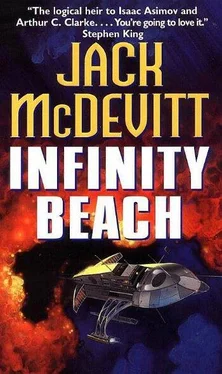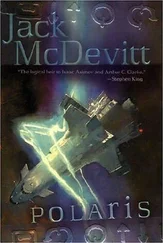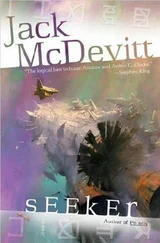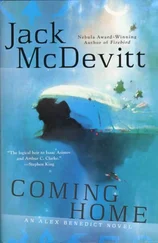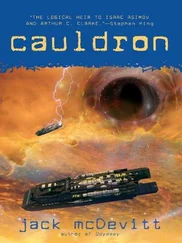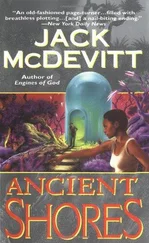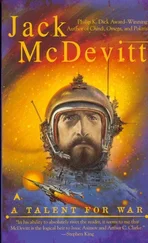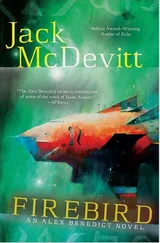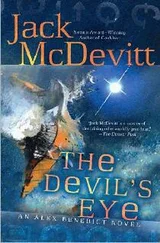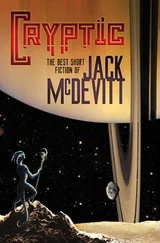She glanced at Solly, telling him silently that the size matched the shoe they’d found. “Yes. Put coffee on.”
“It’s a little less than definitive,” Solly said. “How many women would you say wear that size?”
“Quite a few,” she admitted. “How many of them do you think hang around starships?”
We are not alone.
Somewhere, in places remote beyond imagining, cities light the dark, and towers rise over broken shorelines. Who inhabits these distant cities, who looks out from these far towers, we do not at present know, and cannot guess. But one day we will arrive in their skies, and we will embrace our brothers and sisters.
—SHIM PADWA, The Far Towers, 321
“We should do more of this,” Matt said. “Get ahead of the curve. Hand out prizes. It’s an easy way to make friends for the Institute.”
Well-heeled friends. Management had directed it be called the Morton Cable Award, after the man who’d done the breakthrough work for the development of transdimensional flight. Happily, Cable also had connections with the Institute.
Kim readily agreed—”great idea, Matt”—and suggested that, in view of Tripley’s affinity for decorative starships, they put the award in that form, rather than using a standard plaque. Matt approved and left the details to her judgment.
The cab picked her up early Friday morning. The ocean was still misty as the flyer rose into a crystal sky and arced toward the mainland. There were relatively few private vehicles on Greenway because taxis were cheap, well maintained, and readily available. She saw no seagoing traffic, save for a westbound yacht. A couple of other cabs were in the air, circling aimlessly over the islands, waiting for calls.
Matt had arranged that Averill Hopkin would make the presentation to Tripley. Hopkin was a prizewinning authority in hyperspace propulsion techniques. He was already at Sky Harbor, doing consulting work for Interstellar. So it was all very convenient. Hopkin was dark skinned, dark eyed, a man without substance, Kim thought. His life seemed to be completely entwined in physics. She doubted that he had any idea how to enjoy himself.
The cab dropped her at the terminal. Fifteen minutes later she was on the Seahawk, a maglev gliding south over Seabright’s parklands. The Institute passed on her right, and the beaches on her left. Once outside the city it accelerated smoothly to six hundred kilometers per hour, occasionally tracking over open water, leaving a roiling wake in its passage.
The view from her window became a blur of seacoast, forest, and rivers. Passengers drew their shades and settled in with their links or a book. Some slept, some put on a helmet and watched a selection from the train library.
Kim brought up the Autumn on the screen mounted in front of her seat and looked for a long time at her own image. It chilled her, yet produced a curious sense of her own beauty and power. Markis’s affection for his subject was quite obvious.
Another passenger, a woman, paused in the aisle behind her. She self-consciously wiped the screen.
During the early days after Emily’s disappearance, Kim had occasionally sat with her mother while she conducted conversations with a simulation of the lost daughter. Her father had objected. Emily was his daughter too, he’d said. And it was best for all of them to let her rest. He’d been right: it had been a chilling business, and Kim had sworn she’d never do anything like it herself. When someone is gone, she’d decided, she’s gone . Using technology to pretend otherwise is sick . It had turned out to be easier to make the pledge than to keep it, though. Kim had spoken regularly with Emily during her adolescence, and with her lost parents in the years immediately following the accident. In character, her father had abjured her during these sessions to let go. You have your own life to live, Kimberly , he’d said, frowning. You can manage on your own.
The encounters had always left her hurting. Achieving maturity had been largely a matter of leaving phantasms behind. But she found that to do it, she had to confront the reality, to admit to herself that they were all really gone. To a degree, she understood that she’d been damaged by those conversations, especially those with Emily, because the woman who had vanished from her life when she was barely old enough to remember had lingered for another dozen years. By then, when Kim finally broke away, she had come to understand fully the depth of her loss.
She found a picture of Emily, Yoshi, and Tripley, taken during a farewell luncheon shortly before the departure of the Hunter . Emily was immaculately tailored in dark green slacks, light green blouse, off-white jacket. The ensemble emphasized the effect of her gold-flecked dark eyes.
Emily had had a reputation as an effective junior executive for a communications firm before joining the Tripley Foundation. Kim took a few minutes to listen to an address at a country club during which she described the purposes of the Foundation, what they had accomplished, and what they still hoped to achieve. “ There’s life out there somewhere, ” she’d said. “ And with your help we mean to find it. ”
Emily was passionate, with a comedic sense of timing. She had all the qualities of a good speaker: she knew where she was headed, she told jokes on herself, and she knew how to deliver a one-liner. The applause at the end of her speech was loud and enthusiastic, and it was obvious that Emily could have recruited the whole bunch had she desired.
She’d married twice, but was unattached at the time of her disappearance. There had been no children.
Terminal City was located on an equatorial island two kilometers offshore. The Seahawk left the mainland at Mikai, passed over a series of rocky headlands and began to slow down as it approached the Chibatsu Tunnel. The lights in the car brightened, and they saw a few gulls. Birds had learned to keep their distance from the trains, save at those sections along the route where they cut back to a safe velocity. From this point the train would be moving across the barrier islands, alternately accelerating and decelerating in rhythm with the tunnels. They were on the equator now, westbound.
Kim had begun reading Markis Kane’s favorite detective, Veronica King. She’d finished four of the books during the week since returning from the Severin Valley, and made several efforts during the ride to start another, but it was hard to keep her mind on it. She was thinking ahead to her interview with Benton Tripley, sculpting the questions she would ask.
They stopped at Cleavis Island. The train almost emptied out, but more people swarmed aboard. After they’d gotten moving again, Kim wandered down to the dining car and had lunch.
As she finished up a meal of greens and chicken, the train cleared its last tunnel, leaped Morgantown Bay, and ran into a heavy rainstorm. Along this section of coastline, the mountains came directly down to the sea. The Seahawk plunged into a canyon, and crossed the Edmonton Defile, which was really a series of ridges and channels.
They were twenty meters over the ocean, running along the side of a cliff, when Kim returned her attention to Veronica King and “The Demon Lamp.” The gimmick in the stories was that critical information was inevitably hidden in plain sight. “The Demon Lamp” was set at an archeological dig several layers deep on the large desert island Kawahl. Two people have been murdered, and the motive is said to be concealed in a tower. But there is no tower anywhere on that baking landscape. Except, of course, that there is: the dig site is the tower, now buried after several hundred years and a climate shift.
Читать дальше
